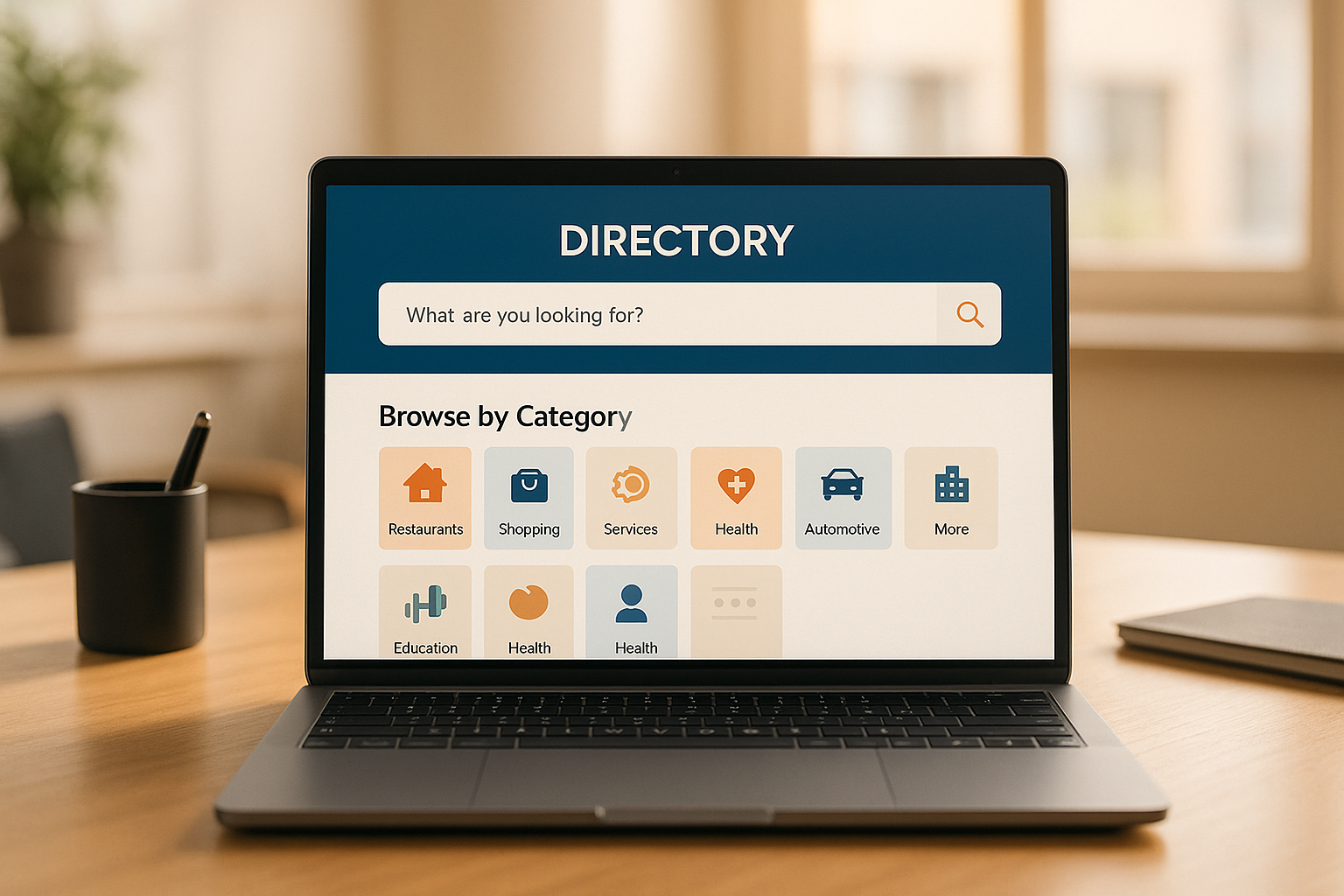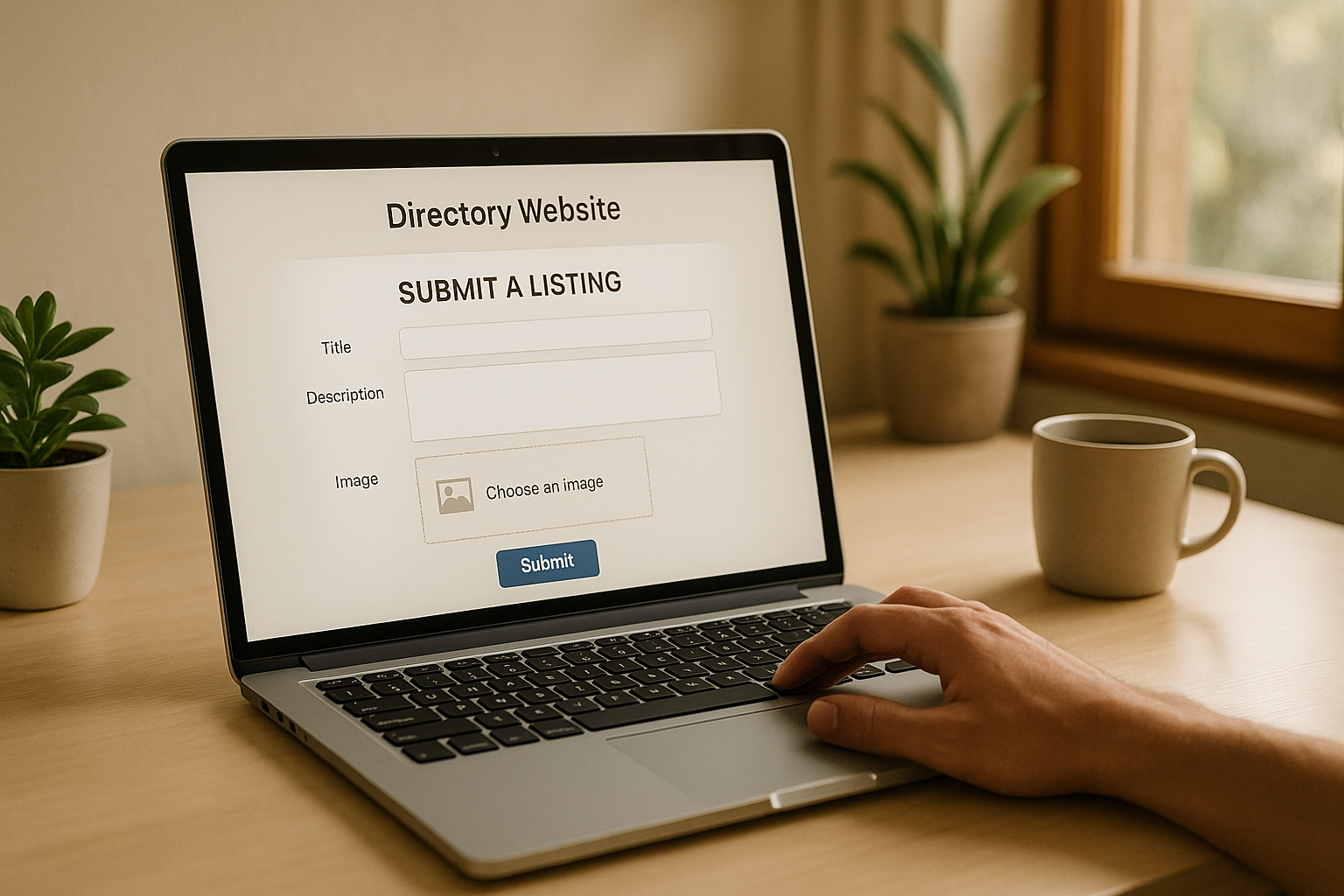

no-code directory builder websites make building professional directories easy, but they come with security risks you need to address. Here are the 10 most common security risks and how to handle them:
By addressing these risks, you can protect sensitive data, maintain user trust, and ensure your no-code website stays secure.
Poor authentication measures on no-code directory websites can leave sensitive data and user accounts vulnerable. Strengthen your access controls to protect these critical assets. Tools like Directify's user management features can help you manage access by assigning roles and limiting sensitive data access to authorized users only. Up next, we’ll dive into the risks tied to unprotected data access.
Exposing sensitive user details, business listings, and communications to unauthorized users can lead to serious security risks. Below are common vulnerabilities and practical steps to mitigate them.
Addressing these issues is a must before focusing on securing data during transmission.
Implementing a structured permission system helps restrict user access to only the data they need. Platforms like Directify include team collaboration tools and permission management features to simplify this process.
Examples of Access Levels:
| Access Level | Data Permissions | Security Requirements |
|---|---|---|
| Admin | Full system access | Two-factor authentication, IP restrictions |
| Editor | Content management | Role-based access control (RBAC) |
| Contributor | Limited data access | Standard authentication |
| Viewer | Read-only access | Basic authentication |
To protect data during transit, use SSL certificates and Content Delivery Networks (CDNs). Directify integrates SSL and CDN features directly into its security options, making this step easier.
Encryption is a key defense against unauthorized data access, securing sensitive information both during transfer and while stored. For no-code websites, encryption is especially important to protect private data from cybercriminals. Here’s a closer look at the types of data that need encryption and how to safeguard them.
| Data Type | Risk Level | Recommended Protection |
|---|---|---|
| Payment Information | Critical | End-to-end encryption, PCI DSS compliance |
| User Credentials | High | Password hashing and salting |
| Personal Information | High | At-rest encryption, SSL/TLS |
| Business Data | Medium | Database encryption |
Encryption weaknesses are typically found in two areas:
Data in Transit
This includes login credentials, form submissions, API access communications, and file transfers that lack SSL/TLS protection. Without this, sensitive data can be intercepted during transmission.
Data at Rest
Stored information, such as passwords, personal details, payment records, and business data, may lack proper encryption, leaving it vulnerable to breaches.
SSL Certificate Setup
An SSL certificate encrypts the connection between users and your website. It also builds trust with visitors by displaying security indicators like HTTPS and can even boost search engine rankings.
Database Encryption
Use strong encryption algorithms for stored data, secure encryption keys, and rotate them regularly. Access to the database should also be logged to monitor activity.
Be alert to these red flags:
Platforms like Directify help address these concerns by providing free SSL certificates and support for custom domains, giving your no-code directory website an added layer of security. Strengthening these measures can significantly reduce the risk of data breaches.
Exposed credentials can lead to unauthorized access to sensitive data and administrative functions, creating serious security risks for no-code directory websites.
Hard-Coded Credentials
Embedding keys and passwords directly in configuration files or source code makes them vulnerable to theft.
Improper Storage of Credentials
| Access Type | Risk Level | Security Measure |
|---|---|---|
| Admin Login | Critical | Enable multi-factor authentication |
| API Keys | High | Store securely in environment variables |
| Database Credentials | Critical | Use encrypted configuration files |
| Service Accounts | High | Apply role-based access control |
Securing these access points is essential to avoid credential exposure.
Secure Storage Methods
Access Control Measures
Monitoring and Alerts
Be alert to these signs of credential exposure:
Routine audits and strict credential management are critical to mitigating these risks. No-code directory platforms, such as those built with Directify, must prioritize credential protection to safeguard sensitive information.
When websites lack proper input validation, they become vulnerable to serious security issues. Unchecked form fields or data entry points can open the door to various cyberattacks.
SQL Injection
Attackers can manipulate or steal data by injecting malicious SQL commands into unprotected fields.
Cross-Site Scripting (XSS)
Unchecked text fields allow harmful JavaScript to be injected, which can lead to session hijacking, account takeovers, or malicious redirects.
Regularly auditing your site can help identify and fix these gaps in input validation. Next, we’ll look at how unsafe external tools can compromise website security even further.
Third-party tools and plugins can increase the risk of security breaches by expanding the potential attack surface. Let’s explore how to reduce these risks through careful checks and smart practices.
External tools often need broad access to work correctly, which can lead to several vulnerabilities:
To minimize risks, focus on permissions, verify sources, and monitor activity:
Review Permissions:
Verify Sources:
Consistent upkeep is key to staying secure. Make it a habit to:
When choosing external tools, prioritize those with a solid security record and frequent updates.
Incorrect security settings can leave your no-code directory vulnerable to potential threats. This becomes even more critical when custom code is added, as it can sometimes override essential protections like SSL and CDN.
When working with custom code, make sure to:
It's a good idea to regularly review your platform's security settings. While platforms like Directify provide secure hosting with built-in SSL and CDN features, always confirm that your customizations don’t disrupt these protections.
Up next, learn how outdated software can further compromise your security.
Using outdated software can put no-code directories at risk. Even if core updates happen automatically, custom elements still need attention to avoid potential security issues. Regular checks help ensure both core and custom parts stay secure.
Platforms like Directify handle core updates automatically, but custom-built elements require manual maintenance. Keeping these elements updated and monitoring integrations is essential.
Set a Regular Update Schedule
Plan monthly reviews for custom components to ensure they work as intended and remain secure.
Test Updates Before Applying
Use a staging environment to test updates before rolling them out to your live site. This helps catch any issues caused by incompatible changes.
Track Dependencies
Maintain a list of all third-party tools and integrations. Subscribe to security alerts for these components to stay informed about updates.
Next, let’s look at how poor activity tracking can weaken your website's security.
Failing to properly track user activities and system events can leave no-code websites exposed, making it harder to spot suspicious behavior or investigate security incidents.
Failed Login Attempts
Without tracking repeated login failures, identifying brute force attacks targeting user accounts becomes nearly impossible.
Data Access Patterns
Skipping logs of unusual data requests or access patterns can leave potential unauthorized activities unnoticed.
System Changes
Not recording configuration updates, plugin installations, or permission changes can create blind spots in your security.
To enhance security, ensure your system tracks these key activities:
Use Detailed Logging
Record timestamps, IP addresses, and user IDs for important events to build a solid audit trail.
Set Up Alerts
Configure alerts for multiple failed logins, unusual data exports, or unexpected system changes to respond quickly.
Keep Logs Long Enough
Store activity logs for at least 90 days to support investigations and meet security standards.
Review Logs Regularly
Schedule weekly log reviews to spot trends or anomalies that could signal security issues.
| Oversight | Security Impact | Fix |
|---|---|---|
| No IP logging | Can't trace attack sources | Enable IP tracking for logins |
| Incomplete user action logs | Hard to investigate incidents | Record all critical user activities |
| Limited log retention | Restricts investigation capability | Store logs for 90+ days |
| No real-time alerts | Delayed threat response | Set up instant notifications |
Directify's tracking tools make it easier to catch irregular events quickly. Consistently monitoring activity can help you identify and address potential threats before they escalate.
Next, we’ll explore how granting excessive user permissions can weaken your no-code website’s security.
Granting too many permissions to users can open the door to serious security risks. These risks often stem from access to areas like admin controls, content management, and data exports. Keeping permissions limited to what's necessary is a smart way to maintain control and minimize vulnerabilities.
Following the principle of least privilege is a must for solid security. Users should only access the tools and data they need to do their jobs - nothing more.
| Permission Type | Security Risk | Recommended Limitation |
|---|---|---|
| Admin Access | Full system control | Restrict to essential personnel |
| Content Management | Website-wide modifications | Limit to specific sections |
| User Management | Account control | Assign to senior team members |
| Data Export | Exposure of sensitive data | Grant only when necessary |
Keeping permissions in check requires regular reviews and updates. Here's how to stay on top of it:
Role-Based Access
Create clear, predefined roles with specific access levels. This makes it easier to manage permissions and avoids the gradual buildup of unnecessary access.
Access Monitoring
Track how permissions are being used. If you notice unused or excessive access, revoke it right away to lower the risk of misuse.
Tools like Directify make managing permissions straightforward by offering features such as:
Keeping your website secure means more than just spotting risks - it’s about consistently running checks and applying updates. These steps help catch and fix problems before they grow. Below, we’ll explore key audit components, how often to review them, and tips for staying ahead on security.
A well-planned security audit should focus on these main areas:
| Audit Area | Check Frequency | Key Actions |
|---|---|---|
| Access Controls | Monthly | Review user roles, remove unused accounts |
| Data Protection | Bi-weekly | Check encryption settings, verify backups |
| External Tools | Monthly | Update integrations, remove unused tools |
| User Activity | Weekly | Monitor logins, flag suspicious behavior |
| Configuration | Quarterly | Update settings, ensure compliance |
1. Weekly Tasks
2. Monthly Reviews
3. Quarterly Overhaul
Automation tools can simplify many security tasks and reduce human error. For example, Directify offers features like:
Staying secure isn’t a one-time effort - it’s a continuous process. Regular checks and updates will help keep your no-code website protected from new and emerging threats.
Protect your no-code directory with these practical security measures.
Proper security configurations can help guard against many vulnerabilities. Focus on these critical areas:
Password and Authentication
Access Management
Managing user roles effectively is another way to tighten security.
| Role Level | Access Rights | Security Requirements |
|---|---|---|
| Admin | Full system access | 2FA required, IP restrictions |
| Editor | Content management | Strong password, limited API access |
| Contributor | Limited posting | Basic access, no backend features |
| Viewer | Read-only access | Public content only |
Securing your domain not only protects your directory but also boosts visibility:
Consistent monitoring and upkeep are essential for ongoing security.
Daily Checks
Weekly Tasks
Routine checks like these complement regular security audits to ensure robust protection.
For added protection, advanced tools can make a big difference. Directify offers these built-in security options to enhance directory safety:
No-code websites need constant attention to security to safeguard their structure and maintain user trust. As discussed earlier, tackling risks through regular audits and careful setup is crucial.
Given the risks, staying ahead with a solid security plan is critical. Threats keep changing, so regular audits help ensure your defenses stay effective. Combine automated tools with manual checks and maintain detailed logs to cover all bases and respond quickly to threats.
Directify takes care of hosting, ensuring server-level security is managed for you. Additionally, you can use your own custom domain, which adds an extra layer of security and professionalism to your website.
For data transmission, Directify employs encryption protocols to protect sensitive information, safeguarding it from unauthorized access both during storage and while being transferred online.
To securely manage user roles and permissions on your no-code directory website, it's important to have a system that lets you assign specific roles and control access levels for your team members. Directify makes this process seamless by allowing you to invite users to collaborate on your directory and customize their permissions based on their responsibilities. This ensures that only authorized individuals can access or modify sensitive areas of your website, keeping your data secure and your workflow efficient.
You should conduct security audits for your no-code website at least once every quarter or more frequently if you handle sensitive data or experience high traffic. Regular audits help identify vulnerabilities and ensure your website remains secure as it evolves.
During these reviews, focus on key areas such as:
Regular audits not only safeguard your website but also build trust with your users by maintaining a secure environment.
Start creating your professional directory website today with Directify's no-code platform.
Get Started Free







